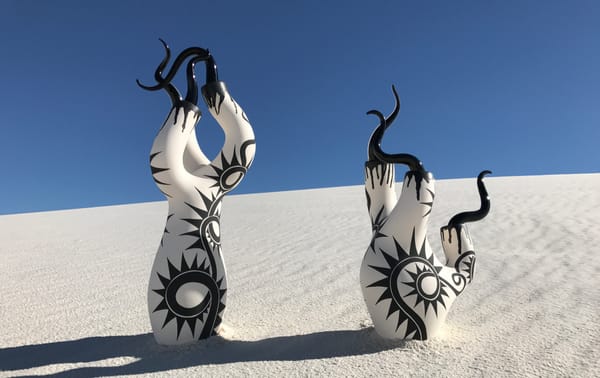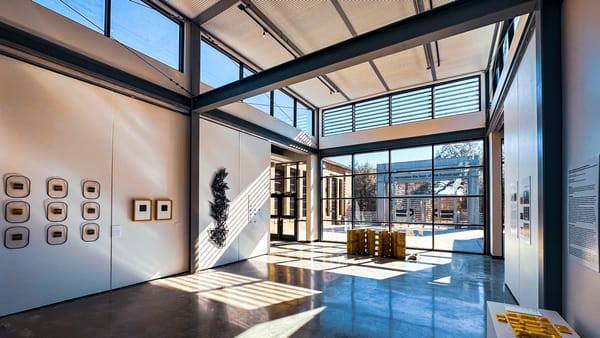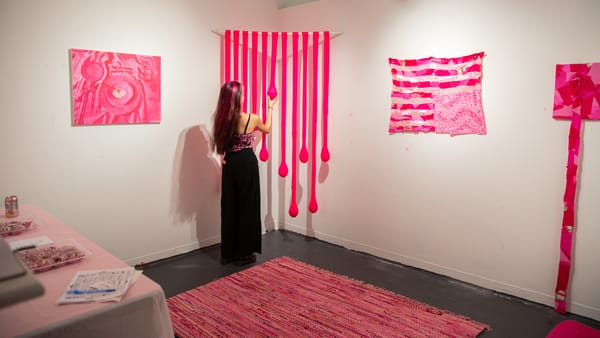A View From the Easel During Times of Quarantine
This week, artists reflect on quarantining from their studios in Los Angeles, Nova Scotia, and a Grecian island.
This is the 190th installment of a series in which artists send in a photo and a description of their workspace. In light of COVID-19, we’ve asked participants to reflect on how the pandemic has impacted their studio space and/or if their work process has changed while quarantining. Want to take part? Please submit your studio! Just check out the submission guidelines.
Stephanie Suter, Halifax, Nova Scotia
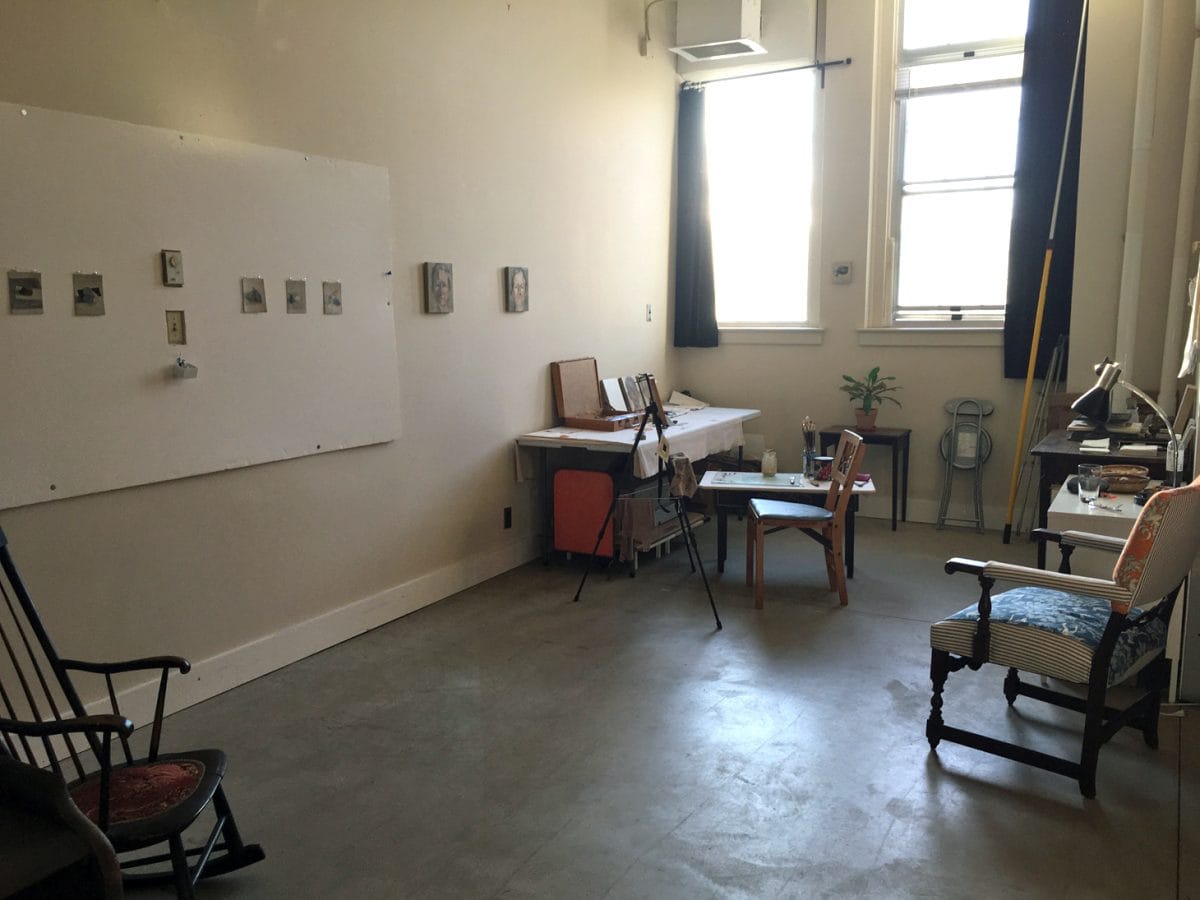
After nearly 30 years of living in Vermont, I came to Halifax, Nova Scotia in June, in the middle of the pandemic. I left a light-filled, second-story studio above a friend's blacksmith shop in Vermont and moved into a studio in an industrial building near the piers in Halifax that I share with a photographer. The shutdown in Nova Scotia is ongoing, which has made it a basically COVID-free zone, but also impossible to get to know people, including other artists in the studio building. So, what to do but work — a forced artist's residency that has allowed some freedom for exploration. A silver lining in this terrible global situation. I have mostly made drawings for the past 10 years, but I can now spread out in a larger space to paint. I'm painting self-portraits and small, intimate still lifes of ordinary objects. Objects that are so insignificant they tend to be overlooked. A way of observing closer, since the big picture right now is so difficult. There's something uplifting about reminding myself about the ordinariness of life, a kind of "chop wood, carry water" attitude of navigating the day-to-day eternal present that we live in now.
Hayal Pozanti, Los Angeles, California
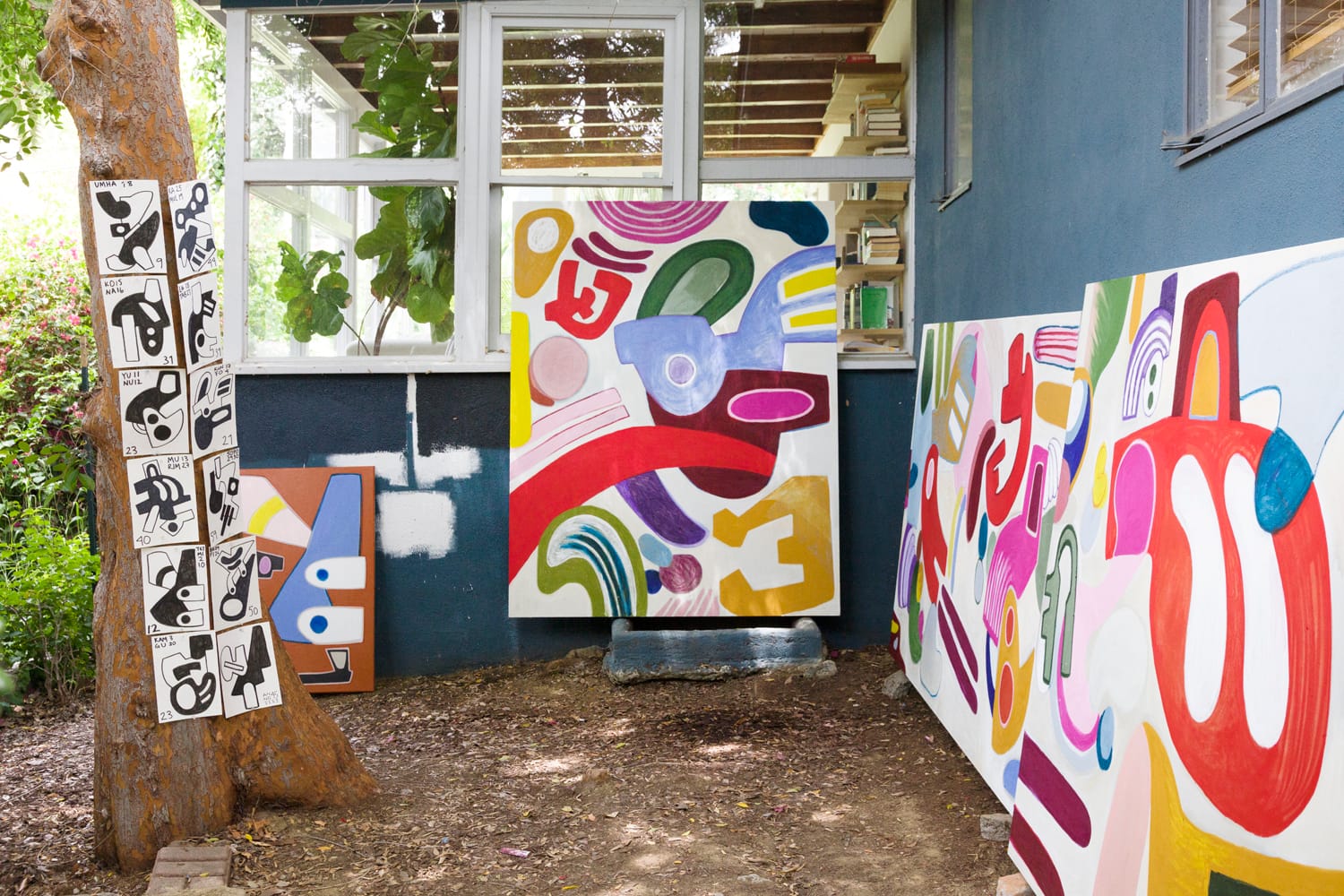
I stopped going to my studio on March 19, 2020. I know the exact date because I took a photo of the bucket I peed into in my studio. Those days nobody knew exactly how the virus was transmitted so I had thought it safe practice to not use the common bathrooms. It was clear that this was not sustainable. I stopped going altogether. A month from that bucket date I moved out of my studio building permanently and moved to our backyard. I could use the restrooms in our house and, more importantly, experience something I'd long fantasized about: painting outdoors. The privilege of a private backyard allowed me to keep on working. Endless inspiration came from being enveloped by a gentle breeze, from sunlight caressing my skin and from the lush green-brown backdrop to my canvases. The work switched completely to natural pigment paints and linen canvases. I developed friendships with squirrels, convinced birds I wasn't after their eggs, gently relocated spider webs every morning from my table and lingered on the creaky sway of the palm tree above me. Among all the horrors of 2020, I will forever remember and cherish those months as one of the most transformative of my life.
Dimitra Skandali, Paros Island, Greece

For the last nine years I lived in the United States and Paros Island, Greece, where I come from. Since the quarantine in March 2020, I've lived and worked on the island. Feelings of limitation and disconnection have been intense very often, a reminder of my young years, when I felt isolated. Now, and with the help of the internet, I try to sustain my artist community as much as possible, while simultaneously interacting with the local community. Ephemeral outdoor installations for passersby to enjoy, studio visits or Zoom meetings are only some ways. But it is difficult.
During this time, I have occupied a place that is usually rented. I can experiment with an abundance of natural materials, like branches, bamboos, flowers, seaweeds, and sea grasses; with found trash, and with materials that are only found on Paros, like the famous Parian marble. Poetry and maps are also inspiration for drawings on paper, on sea grasses, or on marble. I also crochet, embroider, and weave strands of sea grasses, using tradition in unexpected ways to talk about contemporary issues like migration, diaspora, ephemerality, interconnectedness, and to raise awareness on the ocean pollution and the fragility of nature.


